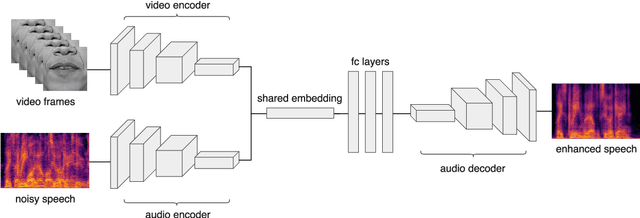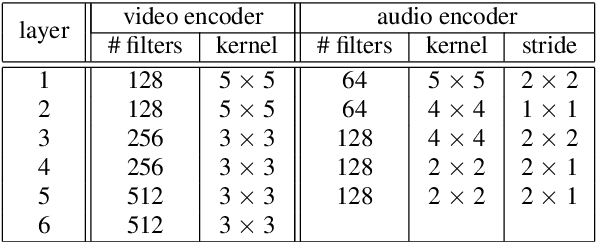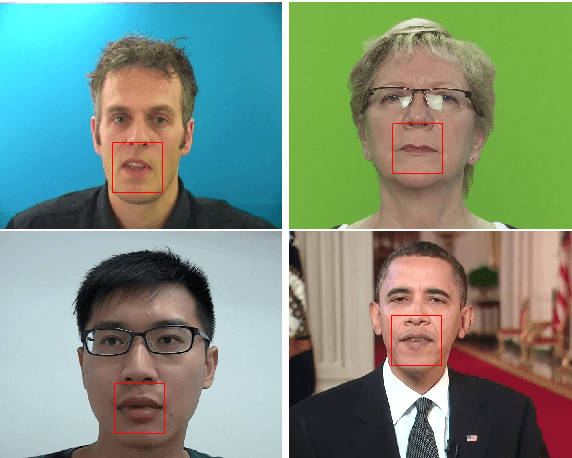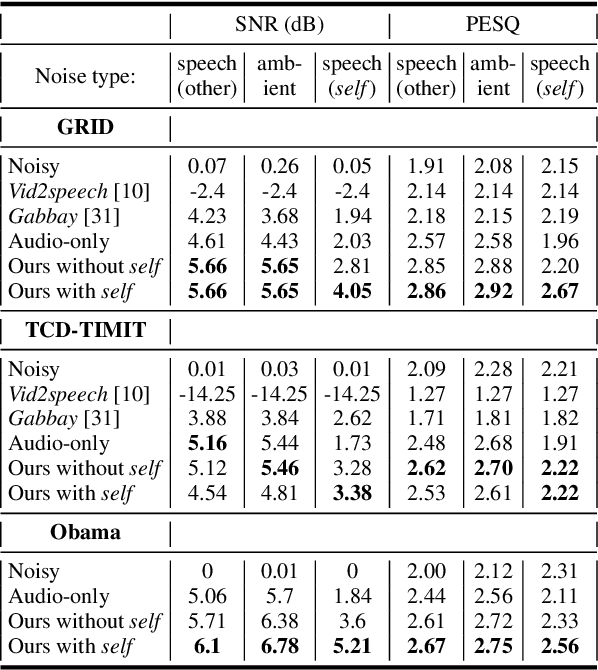Visual Speech Enhancement
Paper and Code
Jun 13, 2018



When video is shot in noisy environment, the voice of a speaker seen in the video can be enhanced using the visible mouth movements, reducing background noise. While most existing methods use audio-only inputs, improved performance is obtained with our visual speech enhancement, based on an audio-visual neural network. We include in the training data videos to which we added the voice of the target speaker as background noise. Since the audio input is not sufficient to separate the voice of a speaker from his own voice, the trained model better exploits the visual input and generalizes well to different noise types. The proposed model outperforms prior audio visual methods on two public lipreading datasets. It is also the first to be demonstrated on a dataset not designed for lipreading, such as the weekly addresses of Barack Obama.
 Add to Chrome
Add to Chrome Add to Firefox
Add to Firefox Add to Edge
Add to Edge